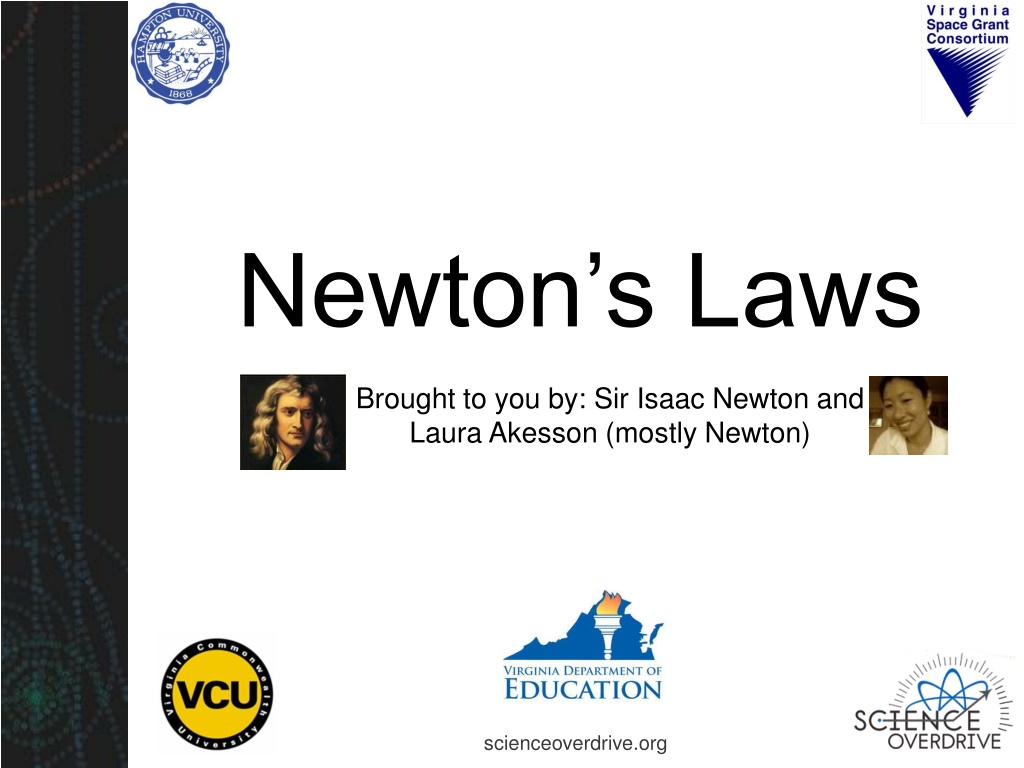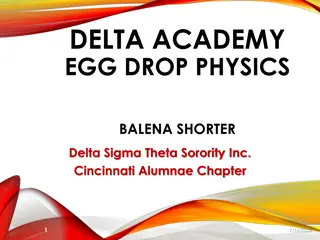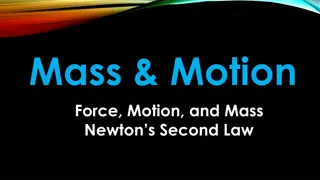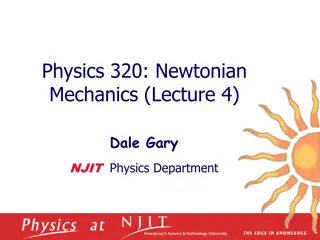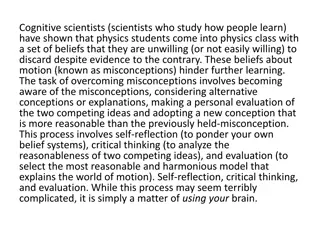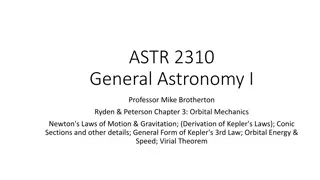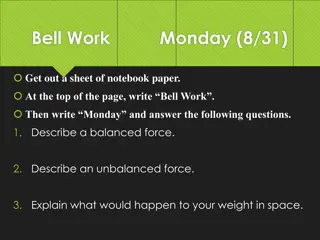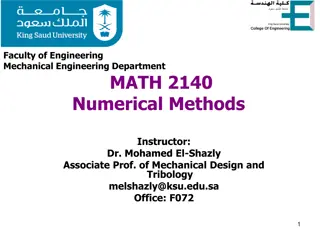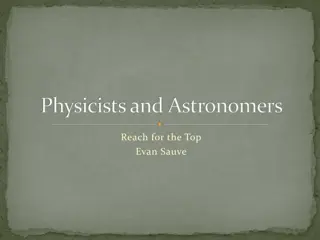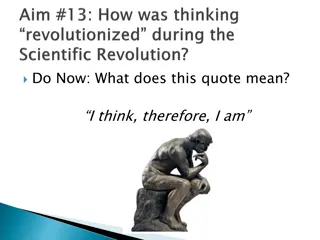Understanding Newton's Laws of Motion
Explore Sir Isaac Newton's foundational principles of motion through engaging visuals and real-world examples. Discover how inertia, force, and acceleration shape the dynamics of objects in motion, as explained by Newton's First and Second Laws. Delve into the concept of inertia and the relationship between force, mass, and acceleration to deepen your understanding of the physical world.
Download Presentation

Please find below an Image/Link to download the presentation.
The content on the website is provided AS IS for your information and personal use only. It may not be sold, licensed, or shared on other websites without obtaining consent from the author. Download presentation by click this link. If you encounter any issues during the download, it is possible that the publisher has removed the file from their server.
E N D
Presentation Transcript
Newtons Laws Brought to you by: Sir Isaac Newton and Laura Akesson (mostly Newton) scienceoverdrive.org
NASA for Educators nasa.gov For Educators Find Teaching Materials scienceoverdrive.org
Newtons First Law of Motion Inertia. An object at rest will remain at rest and an object in motion will remain in motion in a straight line at a constant speed unless acted on by an outside force. http://www.physicsclassroom.com/Class/newtlaws/u2l1a4.gif http://www.physicsclassroom.com/mmedia/newtlaws/il.gif scienceoverdrive.org
1st Law: Inertia blood rushes from your head to your feet when riding on a descending elevator which suddenly stops. the head of a hammer can be tightened onto the wooden handle by banging the bottom of the handle against a hard surface. a brick is painlessly broken over the hand of a physics teacher by slamming the brick with a hammer. (CAUTION: Do not attempt this at home!) to dislodge ketchup from the bottom of a ketchup bottle, the bottle is often turned upside down, thrust downward at a high speed and then abruptly halted. headrests are placed in cars to prevent whiplash injuries during rear-end collisions. while riding a skateboard (or wagon or bicycle), you fly forward off the board when hitting a curb, a rock or another object which abruptly halts the motion of the skateboard. When cars turn, there seems to be a force towards the outside. There is no force to the outside!!! Explain.
1st Law: Inertia About that curve As inertial objects, what do Red and Blue want to do? What will happen to Red during the turn? What will happen to Blue during the turn?
Newtons Second Law of Motion F = ma. (Sum of all forces is equal to the mass times the acceleration). An object s acceleration is directly proportional to the sum of all forces on an object, and inversely proportional to the object s mass. or Directly Proportional Inversely Proportional scienceoverdrive.org
2nd Law: F = ma ___ Force ___ acceleration (Mass constant) ___ mass ___ acceleration (Force constant) scienceoverdrive.org
Newtons Third Law of Motion Equal and Opposite Forces. For any force exerted on object A by object B, there is an equal and opposite force exerted on object B by object A http://www.physicsclassroom.com/Class/newtlaws/u2l4a6.gif http://www.physicsclassroom.com/Class/newtlaws/u2l4a7.gif Gun vs. Bullet Firefly vs. windshield F = Ma F = mA scienceoverdrive.org
3rd Law: Equal and Opposite Forces http://www.physicsclassroom.com/Class/newtlaws/u2l4a5.gif Bat pushes on ball to the right Ball pushes on bat to the left http://www.physicsclassroom.com/Class/newtlaws/u2l4a10.gif Baseball pushes glove leftwards ?? http://www.physicsclassroom.com/Class/newtlaws/u2l4a11.gif Bowling ball pushes pin leftwards ?? Rocket pushes gas to the right ?? scienceoverdrive.org
Vocabulary Inertia- the natural tendency for an object to remain at rest or at constant velocity. Acceleration (a) a change in velocity over time (m/s2) Mass (m)- A quantitative measure of inertia. Units of kilograms (kg) Force (F)- A push or a pull. Units of Newtons (N) Net Force ( F)- the vector sum of all the forces that are acting on an object. (N)
